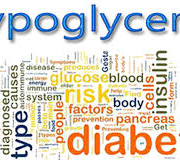How Do We Test For Blood Sugar Dysfunction?
How Do We Test for Blood Sugar Dysfunction?
In other blog posts, we have discussed how our blood sugar can be affected by our lifestyle such as diet, exercise, stress, and sleep. Running other lab tests can be very beneficial and a great way to start seeing how your body is reacting to blood sugar and insulin.
What Lab Test Do We Look At?
1). Fasting blood sugar: This value can be seen on several different blood panels. Fasting means, 10-12 hours no food so that we can see what occurs in your blood sugar cycle. Values ranging from 85-100 show a more stable energy level and this is seen as “normal”. Levels below 85 can manifest as, little energy and show that your body is spending a lot of time on the blood sugar roller coaster. Values below 65 are where there could be other medical problems, and would recommend seeing your Primary Care Physician. To contrast, when your values are above 100 your body is not able to get sugar into the tissue, and the sugar is then circulating in the blood. Finally, levels above 127 is a measure of diabetes.
2). Lipid panels: This is how we can see if you are headed toward metabolic syndrome, or Syndrome X. If your triglyceride level is higher than your HDL then we would be concerned with metabolic syndrome.
3). Lactic acid dehydrogenase (LDH) is an enzyme that helps produce energy. If your LDH number goes below 140 then blood sugars are too low and this could mean that you may be suffering from Reactive hypoglycemia.
4). We use C -Peptide values to see how much insulin your body is making. Insulin doesn’t last in the blood very long. When the pancreas makes insulin, it consists of a long chain of molecules. C Peptide takes a chunk out of the middle of the chain and that value is then measured. A high value of insulin would be a high corresponding value for C- Peptide.
Other Lab Tests We Run
If we know that there is already blood sugar dysfunction, we may suggest running a few other lab tests. These tests are:
1). Hemoglobin A1C: This test measures how much sugar attaches to your red blood cells. The sugar attaches and then caramelizes. This value will show how high or low your blood sugar has been for the last 2-3 months.
2). Fructosamine: This test is similar to the Hemoglobin A1C test except it measure 2-3 weeks instead of 2-3 months. This is a great test for measuring progress with blood sugar dysfunction.
3). GAD 65, IA2 Antibody, and Antipancreatic Islet Cell Antibody: These tests are helpful to see how your pancreas is functioning when producing insulin. If there is variation in these levels, it could signify a genetic pattern or an autoimmune diabetic pattern and could also show if there is any damage to the pancreas. This would signify that we need to assist in calming your immune system.
These tests give us a starting point for managing your blood sugar dysfunction symptoms and gauge where you are in the blood sugar process. It is imperative to find out where you are now to see where and how we can improve your health!
Here’s To A Better Life,
Dr. Steve Puckette









